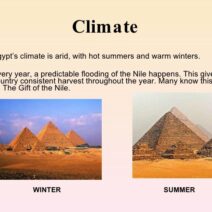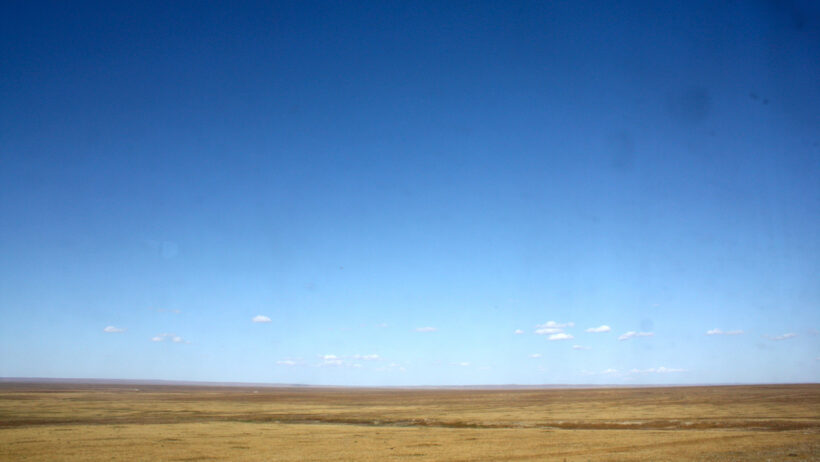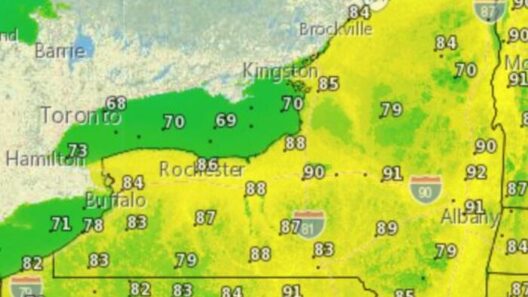Grasslands, often referred to as prairies, are a vital component of the Earth’s diverse ecosystems. These terrestrial biomes exhibit distinct climatic characteristics which govern their ecology and influence the life forms that thrive within them. Understanding the climate of a grassland entails delving into the multifaceted seasonal changes that sculpt the landscape and govern its biodiversity. This exploration promises not only to pique curiosity but also to foster a deeper appreciation for the intricate relationships that define these ecosystems.
The climate of grasslands is predominantly temperate but can range widely based on geographical location. Generally, they are characterized by low to moderate annual precipitation, averaging between 10 and 30 inches. This precipitation is crucial, as it influences the flora and fauna adapted to thrive in such arid conditions. The limited moisture creates a challenge for plant life, leading to a predominance of drought-resistant grasses, various herbaceous plants, and a scarcity of trees, which struggle to compete for limited water resources.
Seasonal changes play a pivotal role in shaping the climate of grasslands. The transitions from winter to spring, summer to autumn, and vice versa are not merely cycles; they are profound transformations that dramatically impact the ecological dynamics at play. The interplay of temperature, precipitation, and sunlight defines each season and dictates the growth patterns and life cycles of grassland species.
Spring heralds a resurgence of life after the bleakness of winter. As temperatures gradually warm and sunlight increases, the dormant grasses awaken from their slumber. This is the season of germination; seeds that have laid patiently beneath the frost are triggered by the conditions favoring growth. The landscape transforms into a vibrant tapestry of green as nutrient cycling accelerates. Prairie flowers, adapted to bloom quickly to take advantage of the moist soil, burst forth in a riot of colors, attracting pollinators, such as bees and butterflies. The harmonious turnout of flora during this season sets the stage for a multitude of interactions within the ecosystem.
Summer in grasslands introduces a new set of climatic conditions characterized by heat and often an increase in moisture, albeit sporadically. The temperatures can soar above 90°F, creating a stark contrast with the mild spring. In regions where summer storms occur, these provide crucial hydration, often leading to a period of rapid growth and competition among plant species. Grasses reach their zenith during this time, and the prairie becomes a sanctuary for herbivorous grazers like bison, antelope, and even prairie dogs. The vitality of life and interdependence showcased in summer illustrates the delicate balance of survival and competition.
However, this abundance does not persist indefinitely. As the days shorten and the air cools, autumn descends upon the grasslands, bringing forth a beautiful decay. The vibrant greens transform into hues of gold and brown as photosynthesis wanes. Plants begin to prepare for the impending winter by shedding leaves and storing energy in their roots. This preparation is essential for survival in the face of cold winds and frost. Additionally, many animal species adapt their behaviors accordingly—some migrate to warmer regions, while others enter a form of dormancy or hibernation, showcasing the diverse survival strategies inherent in these ecosystems.
Winter, seemingly austere, casts its long shadow over the prairies, ushering in a period of stillness. Snow blankets the terrain, insulating the roots of grasses and plants below the surface. This cover provides a modicum of warmth and moisture regulation, facilitating a sort of hibernation beneath the frozen facade. Life seems to pause, but under the snow, the cycles of life are merely on hold, awaiting the signals of spring to re-engage. Moreover, the starkness of winter offers a clarity about life in the grasslands, revealing the complex interrelationships and environmental adaptations that occur quietly beneath the surface.
Beyond the seasonal variations, it is imperative to note the burgeoning threats posed by climate change. Grasslands are increasingly vulnerable to alterations brought on by human activities, such as increased carbon emissions and land use changes. These factors lead to modifications in rainfall patterns, temperature extremes, and the frequency of extreme weather events. Such shifts can disrupt the delicate balance of these ecosystems, threatening to erase centuries of ecological evolution.
The climate of a grassland is an exquisite ballet of seasonal changes, each phase intricately weaving into the next, creating a complex mosaic of life. Understanding this climate and its fluctuations is crucial not only for appreciating these unique ecosystems but also for advocating for their preservation. By shifting our perspective to recognize the significance of each season and the interdependence of life within these prairies, we can champion their protection against the looming impacts of climate change, ensuring that future generations can witness the beauty of the grasslands in all their thriving splendor.
In conclusion, the climate of grasslands is a dynamic and integral component of our planet’s ecological health. It is characterized by distinct seasonal transitions that profoundly influence the flora and fauna inhabiting these regions. As environmental stewards, a deeper understanding of these climatic conditions imbues us with the responsibility to protect and preserve these vital systems, cultivating a future where grasslands flourish and continue to play their essential role in the Earth’s ecological tapestry.







